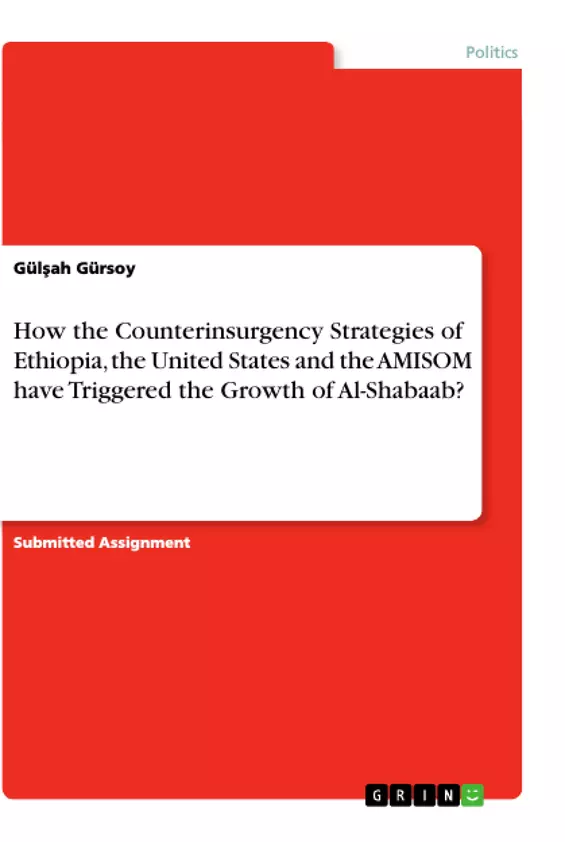In this essay; the background of the insurgencies in Somali, counterinsurgency (COIN) responses from Ethiopia and the United States, and the reaction of insurgents will be summarized.
Somali/Somalia is considered as a “failed state” by the international community, for it does not have functioning state institutions since the fall of Siad Barre regime in 1991. The constant political and humanitarian crises in Somalia have deeper roots in history. The territories where Somali people lived were colonized by French (north, today’s Djibouti), British (today’s Somaliland) and Italian (southern parts of today’s Somali) states. While the imperial powers shared lands in Africa in 18th and 19th centuries, none of them considered exactly what is happening on the soil and which ethnic groups were living where. The borders that were drawn on maps have created enormous problems in the future that no one would ever imagined before. The different agendas and interests of imperial states have initiated conflicts among tribes (or clans), such as British was involved in extracting resources, while Italians were improving cultivation in southern parts. These different kinds of exploitation by imperial powers caused disputes about land and water resources among Somali clans.
Inhaltsverzeichnis (Table of Contents)
- Introduction
- Background:
- Somalia After Independence, 1969 Coup d'état and Siad Barre Regime
- Lessons Learned from AMISOM
- Conclusion
Zielsetzung und Themenschwerpunkte (Objectives and Key Themes)
This essay aims to examine the counterinsurgency strategies employed by Ethiopia, the United States, and the African Union Mission in Somalia (AMISOM) and their impact on the growth of the Somali-based militant group, Al-Shabaab.
- The historical context and complexities of Somalia's post-independence period, including the 1969 coup d'état and the Siad Barre regime.
- The role of foreign actors, particularly the United States and Ethiopia, in shaping the Somali landscape and inadvertently contributing to the rise of Al-Shabaab.
- The strategies employed by Ethiopia, the United States, and AMISOM in counterinsurgency operations and their unintended consequences.
- The motivations and strategies of Al-Shabaab as a response to the counterinsurgency efforts.
- The multifaceted nature of the conflict in Somalia, encompassing political, social, economic, and religious dimensions.
Zusammenfassung der Kapitel (Chapter Summaries)
The essay's initial chapters delve into the historical background of Somalia, tracing the country's trajectory from independence to the rise of Al-Shabaab. It explores the structural problems faced by the Somali state after independence, highlighting the discrepancies between the British-influenced north and the Italian-influenced south. The essay examines the role of clan culture and politics in exacerbating tensions, particularly after the 1969 coup d'état that brought Siad Barre to power. It examines the impact of Barre's policies, including his attempts to implement socialist ideology and his pursuit of a "Greater Somalia" that led to the Ogaden War with Ethiopia. The essay analyzes the consequences of Barre's regime, including the emergence of armed opposition groups and the increasing influence of foreign actors. It ultimately lays the groundwork for understanding the complex interplay of factors that have shaped the Somali conflict.
Schlüsselwörter (Keywords)
The primary keywords and focus topics of this work include counterinsurgency, Al-Shabaab, Somalia, Ethiopia, United States, AMISOM, Siad Barre, clan politics, foreign intervention, Ogaden War, and Islamic extremism. These terms encapsulate the core concepts and research themes explored throughout the essay, providing a framework for understanding the multifaceted nature of the Somali conflict.
- Citation du texte
- Gülşah Gürsoy (Auteur), 2019, How the Counterinsurgency Strategies of Ethiopia, the United States and the AMISOM have Triggered the Growth of Al-Shabaab?, Munich, GRIN Verlag, https://www.grin.com/document/1010487



